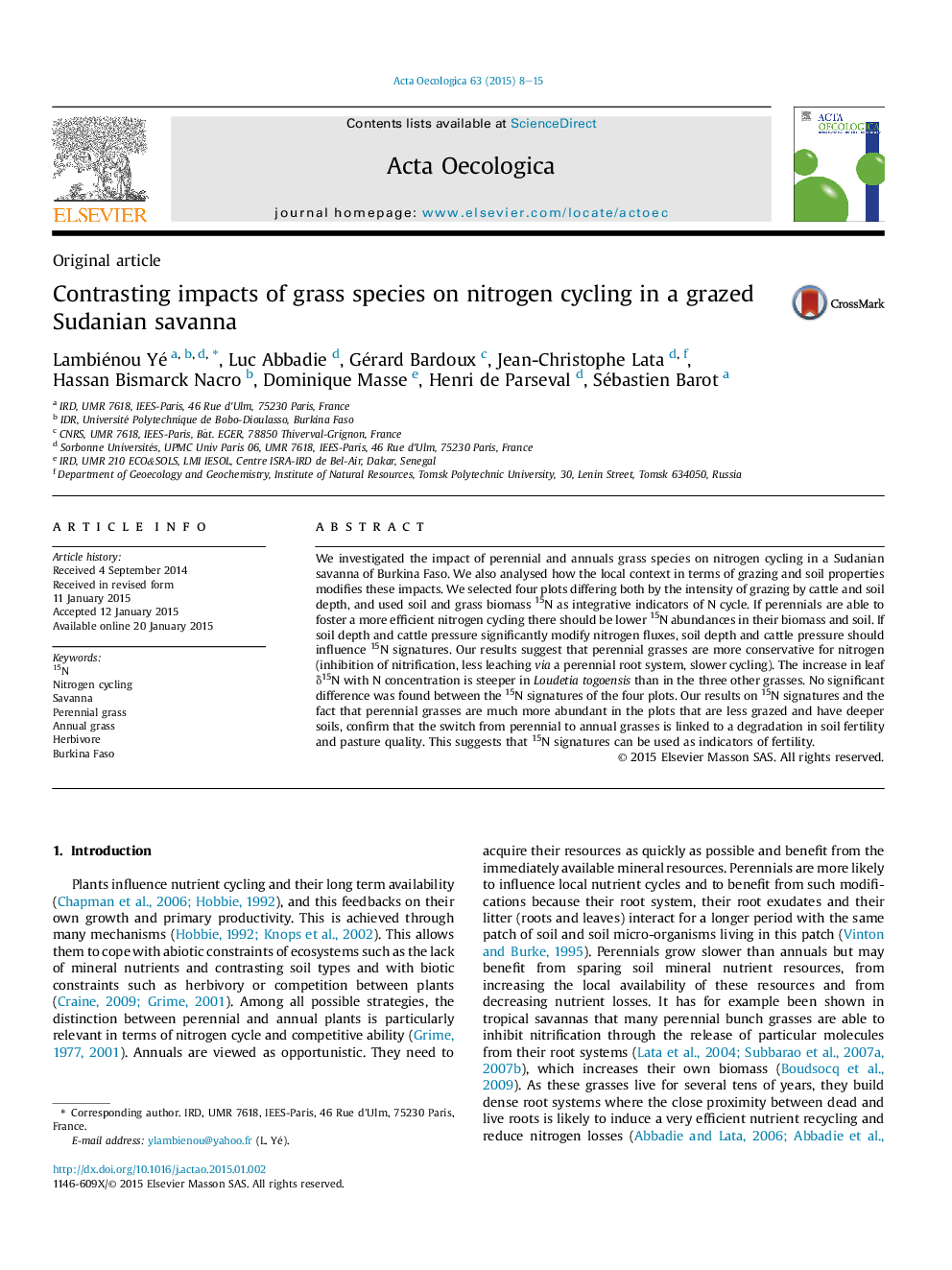| Article ID | Journal | Published Year | Pages | File Type |
|---|---|---|---|---|
| 4380667 | Acta Oecologica | 2015 | 8 Pages |
•We investigated the impact of perennial and annuals grasses on nitrogen cycling.•We used 15N signatures as integrative descriptors of nitrogen cycling.•15N signatures suggest that perennial grasses are more conservative for nitrogen.•Soil depth and grazing do not have a consistent direct effect on nitrogen cycling.•Grazing indirectly impacts nitrogen cycling by fostering annual grasses.
We investigated the impact of perennial and annuals grass species on nitrogen cycling in a Sudanian savanna of Burkina Faso. We also analysed how the local context in terms of grazing and soil properties modifies these impacts. We selected four plots differing both by the intensity of grazing by cattle and soil depth, and used soil and grass biomass 15N as integrative indicators of N cycle. If perennials are able to foster a more efficient nitrogen cycling there should be lower 15N abundances in their biomass and soil. If soil depth and cattle pressure significantly modify nitrogen fluxes, soil depth and cattle pressure should influence 15N signatures. Our results suggest that perennial grasses are more conservative for nitrogen (inhibition of nitrification, less leaching via a perennial root system, slower cycling). The increase in leaf δ15N with N concentration is steeper in Loudetia togoensis than in the three other grasses. No significant difference was found between the 15N signatures of the four plots. Our results on 15N signatures and the fact that perennial grasses are much more abundant in the plots that are less grazed and have deeper soils, confirm that the switch from perennial to annual grasses is linked to a degradation in soil fertility and pasture quality. This suggests that 15N signatures can be used as indicators of fertility.
